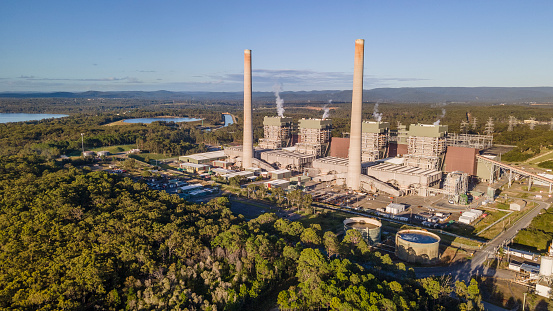Menu
Just Transition Insights, Issue #15, 05/08/2023
By Jonathan Tasini
|

Leading Off: Big Leap Forward In Oz
Back in January, we discussed the creation of a taskforce in Australia that would eventually lead to the setting up of a Just Transition scheme. Rapidly, in relative terms to Just Transition efforts globally, the effort has now taken a major leap forward.
On May 5th, the Australian government unveiled plans to set up an agency that will lead to the creation of a statutory authority:
The new, legislated Net Zero Authority will:
1. Support workers in emissions-intensive sectors to access new employment, skills and support as the net zero transformation continues.
2. Coordinate programs and policies across government to support regions and communities to attract and take advantage of new clean energy industries and set those industries up for success.
3. Help investors and companies to engage with net zero transformation opportunities.To kickstart the Authority’s responsibilities immediately, the Government intends to establish an Agency from July 1 this year, initially housed in the Department of Prime Minister and Cabinet. The Agency will also lead on providing advice to Government on the final design and establishment of the legislated National Net Zero Authority
We’ve highlighted the first element key to our mission here. Why does this appear to be a significant step forward? And possibly a model for other countries?
First, housing the Agency within the Prime Minister’s office sends a signal to the country, and, to be sure, the Australian corporate world and the vast array of multi-national companies doing business in the country: we are serious about this effort. If you wanted to make just a token effort, you’d dispatch the effort to some backwater secondary ministry.
Second, we won’t know the exact scope and power of the statutory authority that will be stood up through the initial six-month work of the agency until specific legislation is put before Parliament. However, we do know this: statutory authorities generally come loaded with regulatory power and, typically, can, then, enforce standards across the country—if needed, by seeking court orders to compel action.
Third, note the inclusion of the third point in the press statement: the government’s intention is to use the eventual authority to assist companies who likely are not in a place to meet the net zero goals on their own, especially when it comes to future requirements to redeploy workers into other jobs.
Here’s another key factor: statutory authorities in Australia—and, likely, other parts of the world—have staying power. Which makes them somewhat politics-proof and fenced off from the vagaries of changes in governments. Right now, the Albanese-led Labor government seems well-placed to have a strong run leading the country, perhaps, for at least a decade.
But, even if the opposition climate-denial conservative Tories (who as the Albanese goverment pointed out in its May 5th statement “put its head in the sand for a decade and ignored the pleas of communities, unions and business for coordination and support through this massive change”) some day reclaimed government, it would be near impossible to eliminate the Authority. As an example, the Tories hated the Clean Energy Finance Corporation—essentially, a “green bank”—which was set up in 2012 but could not kill it. In a relatively closely divided political arena, once an authority is created, it lives on.
There is a lesson here: good deeds meld with practical politics. Like it or not, governments—national, state, or local—will always get blamed for job losses if workers perceive nothing was done to either stem the losses or, in the case of climate change, lay the groundwork for a Just Transition.
So, why not do the right thing up front and reap the benefits? An old cliche, then, is well-worth keeping in mind when it comes to Just Transition: good policy is good politics.
As the Agency work proceeds and evolves into the Authority—and more of its powers and leadership become more clear—we will continue to update our readers. We’ve included in this issue an opinion piece, below, from Tony Maher, the General President of Australia’s Mining and Energy Union, whose members are clearly deeply effected by transition. We invite other viewpoints.
SPONSOR MESSAGE
A message from the Maritime Union of Australia
The MUA is proud of the high union density in the maritime industries, and encourages all maritime workers to join the union to benefit from the solidarity and collectivism that unionism brings. Learn more about our campaigns on behalf of maritime workers here.
Spotlight: Real Facts On A Rough Transition
We often point out the disaster awaiting millions of workers globally if transitions are done on the cheap. Here’s an example of a very rough transition, courtesy of the UC Berkeley Labor Center.
The Center did an in-depth look at a permanent shutdown in 2020 of a Marathon oil refinery in Contra Costa County, California, which led to the layoff of 345 unionized workers.
The upshot [the bold is added]:
In the aftermath of the refinery shutdown, workers were relatively successful in gaining post-layoff employment but at the cost of lower wages and worse working conditions. At the time of the survey, 74% of former Marathon workers (excluding retirees) had found new jobs. Nearly one in five (19%) were not employed but actively searching for work; 4% were not employed but not looking for a job; and the remaining 2% were temporarily laid off from their current job. Using standard labor statistics measures, the post-layoff unemployment rate among Marathon workers was 22.5% and the employment rate was 77.5%. If workers who have stopped actively searching for work were included, the post-layoff unemployment rate was higher at 26%.
Former Marathon workers find themselves in jobs that pay $12 per hour less than their Marathon jobs, a 24% cut in pay. The median hourly wage at Marathon was $50, compared to a post-layoff median of $38. A striking level of wage inequality defines the post-layoff wages of former refinery workers. At Marathon, hourly pay ranged between $30 to $68. The current range extends as low as $14 per hour to a high of $69. Workers reported benefits packages comparable to their pre-layoff Marathon benefits.
This is hardly a surprise.
The report offers a set of recommendations:
-
Extended cash payments to maintain pre-layoff income levels
-
Financial support to cover the 24% average gap in workers’ pre-layoff wages and their post-layoff wages
-
Bridge-to-retirement funding that provides full retirement benefits to workers eligible for early retirement within one year following layoff
-
Third-party certifications to define and verify the skills of refinery workers, and facilitate more efficient and accurate skill matching between jobs and workers in the labor market
-
Targeted, individualized job search assistance that focuses on a broad scope of strategies for identifying good job opportunities, and preparing for and applying for those jobs
-
Targeted, short-term training for a specific set of occupations and industries, with income support for workers during training
-
Short-term, stand-alone training modules to enable workers to maintain certifications they had earned on-the-job at the refinery, such as CPR and HAZMAT training certifications
-
Counseling services for workers and their families during layoffs and job transitions
One recommendation that is missing: it’s impossible to think about “high bar” Just Transition plans without linking a plan to unionization. As the study points out, the laid-off workers were unionized—a factor that clearly underpins the high wages at the Marathon facility, which simply are not replicated in non-union settings.
Ideas: How Canada’s EVs Can Do Right For Workers
We will be doing a lot in the near future about the rise of the electric vehicle (EV) industry and what it means for Just Transition for workers. In short, the EV industry is likely to shrink the global car assembly workforce in the industrialized countries for one simple reason: an EV has a lot fewer parts.
That does not mean workers should just accept a kick in the pants. Profits will be made in the EV industry. In fact, while price competition will lower the cost over time, EVs are still a pricier item compared to the internal combustible engine vehicles. So, some of those those profits should be directed towards supporting workers’ incomes, either through redeployments or longer-term income support/early retirement.
UNIFOR, Canada’s largest private sector union with north of 300,000 members, includes the auto sector (the previous Canadian Auto Workers merged into UNIFOR). Last year, it put forth a report, “Navigating the Road Ahead – Rebuilding Canada’s Powerhouse Auto Sector“ that included some key ideas to consider to create high quality union jobs—a necessity, as we point out regularly, to ensuring a “high bar” Just Transition. We think these remain relevant now as the EV sector grows:
Actively encourage union jobs and collective bargaining:
Auto sector jobs are largely good jobs. Auto assembly workers in Canada, for instance, earn wages approximately 30 per cent above the national average for all workers. These above-average wages as well as access to additional group insurance, pensions, income maintenance programs and other benefits, are a result of collective bargaining advanced over decades by Unifor. These “union benefits” are so well established in the auto industry that all automakers, including Toyota and Honda, neither of which are yet certified as a union shop, provide comparable benefits. Non-union benefits, of course, come without the added value of union representation for workers. The positive effects of unionization have positioned the auto sector as a driver of good middle-income jobs generating significant spillover economic benefits for families, neighborhoods and communities. In 2019, for instance, autoworkers’ wages contributed $8.7 billion to the broader economy.
Frustratingly, rigid and imbalanced labour laws deny far too many workers the benefits of unionization. This phenomenon is as true in Canada as it is in jurisdictions around the world. Despite high levels of union density in auto assembly, where roughly two thirds of workers have collective bargaining coverage, unionization rates are lower among smaller supplier parts firms, approximately half the rate of the assembly sector, as well as in distribution, services and dealerships. Overall, private sector union density in Canada today hovers around 15 per cent of the workforce, falling from nearly 30 per cent in the early 1980s.
Automakers, like other multinational enterprises, continue to take advantage of global trade agreements and expanded global supply chains to source goods from low-cost, non- union jurisdictions. Growing global competition for product mandates creates a more vicious environment that puts downward pressure on labour rights.
Changing course requires all levels of government to advocate actively for unionization and establish laws that improve workers’ access to unions and free collective bargaining – a fundamental right under the Canadian Constitution as well as international labour standards. Fair labour laws must protect workers’ rights to unionize against employer intimidation and threats. This need includes enabling quicker, more efficient ways of certifying unions, alternative and broad-based models for collective bargaining and stricter penalties for employers who break the law.
And:
Require all recipients of public investment supports to establish union neutrality covenants as a condition of funding.
The Strategic Innovation Fund has proven itself as a powerful tool to leverage public funds to drive investment and strategically develop key industries, including auto. Those receiving public funds from any level of government must commit to advancing Canada’s broader social objectives, ensuring that the constitutional rights of workers are advanced. Employers in this case, must commit to uphold fundamental union rights within their operations in Canada and commit to taking a neutral stance on unionization among employees, meaning that they will enable workers to certify a union without interference or intimidation.
And:
Establish card-based union certification in all jurisdictions.
In order to support workers’ right to unionization, the certification process must be fair for workers and free from employer intimidation. Automatically certifying a union once a majority of workers sign a union card eliminates the requirement to hold a second vote, often marred by employer counter- campaigns. It also creates a less confrontational, fairer path for workers, including autoworkers,to exercise their right to unionize and undertake collective bargaining.

Opinion: The Authority Will Bring Dramatic Change
by Tony Maher
[This opinion piece comments on the establishment of the Australian Net Zero Authority which is described in this week’s Leading Off item]
The Net Zero Authority is a game-changer for coal-power workers and communities. It will provide support and hope for the future at a time of rapid and inevitable change.
Workers in coal-fired power stations and associated coal mines face the reality that the timeline for closure of coal-fired power stations is accelerating.
They have an uncertain future; and so do their communities. Energy regions from the Latrobe Valley to Lithgow to Collie to Gladstone and here in the Hunter Valley rely on mines and power stations for their economic lifeblood.
Until now, co-ordinated federal support for coal-power workers and communities has been the missing piece when it comes to climate and energy policy.
Today’s announcement of a legislated statutory authority with powers to support displaced workers into jobs and investment into communities addresses that.
The establishment of this Authority is an important acknowledgment that workers and communities that rely on emissions-intensive industries – like Muswellbrook – must not be left to bear the brunt of national efforts to address climate change. After powering the nation for generations, these workers and communities should be supported, not abandoned.
At Liddell, our union was successful in securing a commitment from AGL to no forced redundancies when the power station closed. But this was facilitated by having Bayswater across the road, giving somewhere for workers to transfer to if they were not ready to retire.
This won’t be the case when Eraring closes in 2025, or for any of the other power stations around the country in the succession of closures scheduled in the years ahead. Measures at individual facilities don’t address the shrinking pool of jobs, nor the interests of the many people who rely on power stations and coal mines through supply chains, local economic activity and family dependents.
Transition to a net zero economy is coming; and when it comes to looking after workers’ interests, we can choose to do it well or poorly. There are examples of both around the world, with consequent positive or devastating outcomes for entire regions.
With today’s announcement, Australia is setting out on a path to doing energy transition well. The benefits of the Net Zero Authority will flow through our regional communities in terms of jobs, economic activity and positive social outcomes for generations.
Maher is the General President of the Australian Mining and Energy Union, which is a sponsor of Just Transition For All.
Links
Clean Energy Finance Corporation: is the Australian government’s official “green bank” and describes its activities thus—”We invest alongside private investors, innovators and industry leaders, drawing on our deep sector experience, investment expertise and portfolio strength to fill market gaps and maximise our impact. In investing on behalf of the Australian Government, we have a strong commitment to deliver a positive return across our portfolio.”
Table of Contents
Leading Off
Big Leap Forward In Oz
Spotlight
Real Facts On A Rough Transition
Ideas
How Canada's EV Can Do Right For Workers
Opinion
The Authority Will Bring Dramatic Change
Links
This Week's Links
Can’t wait to subscribe to the newsletter?
*We post information pursuant to the U.S. Fair Use Doctrine, and applicable international standards, in order to advance the knowledge base and education of our global audience. We endeavor to include the original link to documents. However, upon requests of original authors of posted documents, where explicit use permission is not granted, we will remove documents if it is determined continued use is not appropriate. We also reserve the full right to not include, or remove, any data inconsistent with our mission.
















